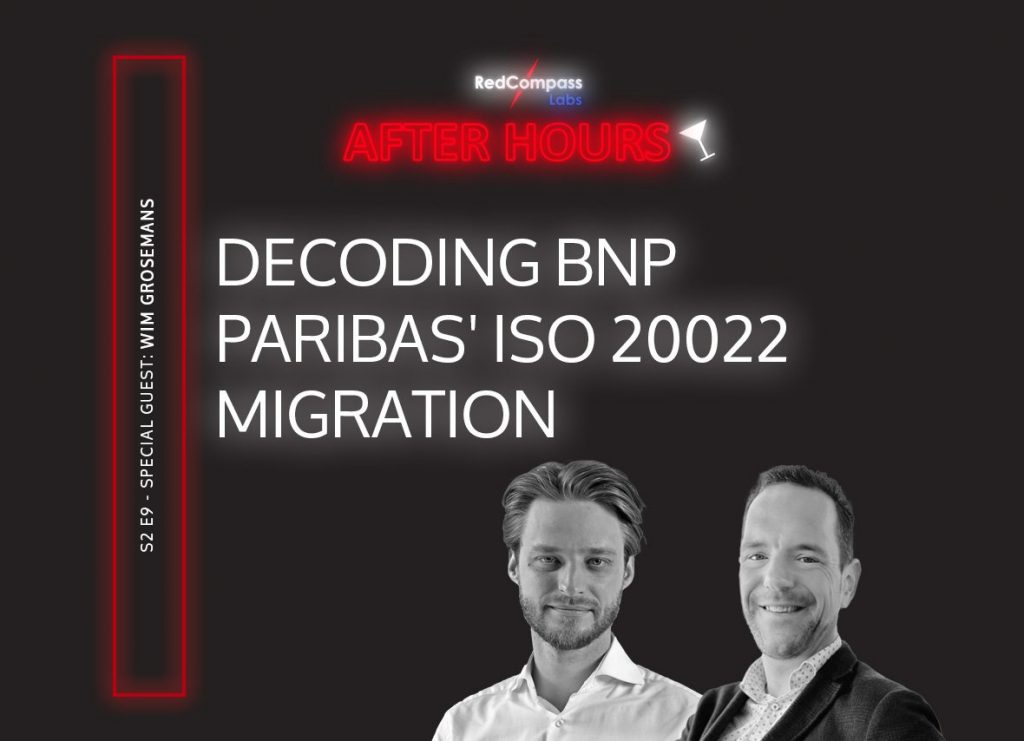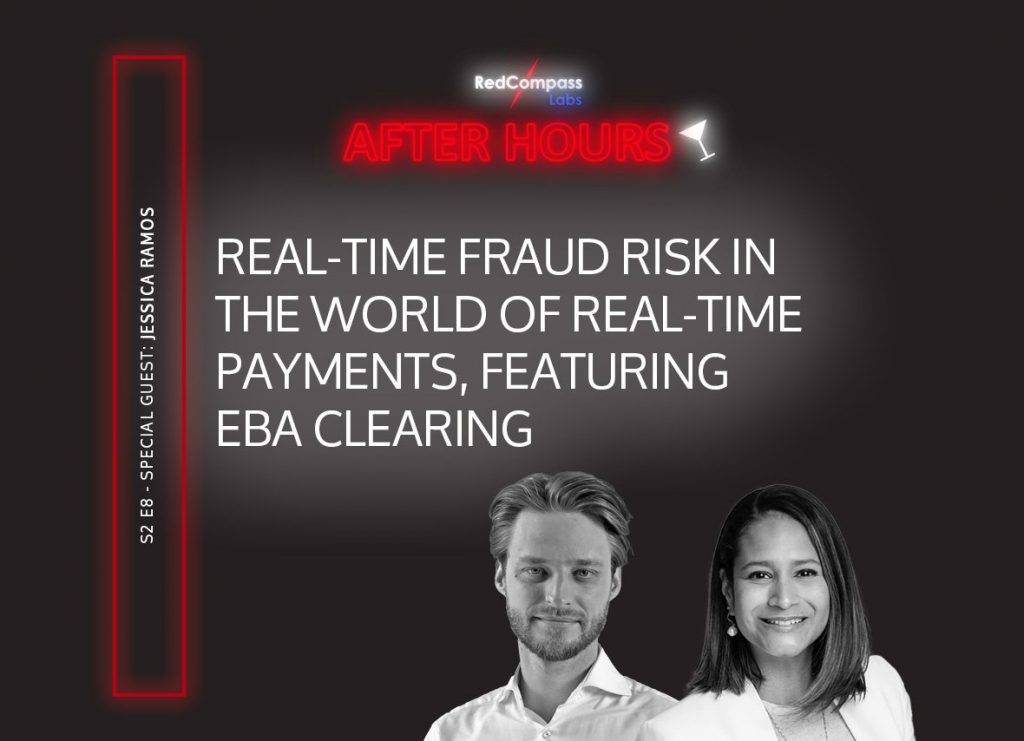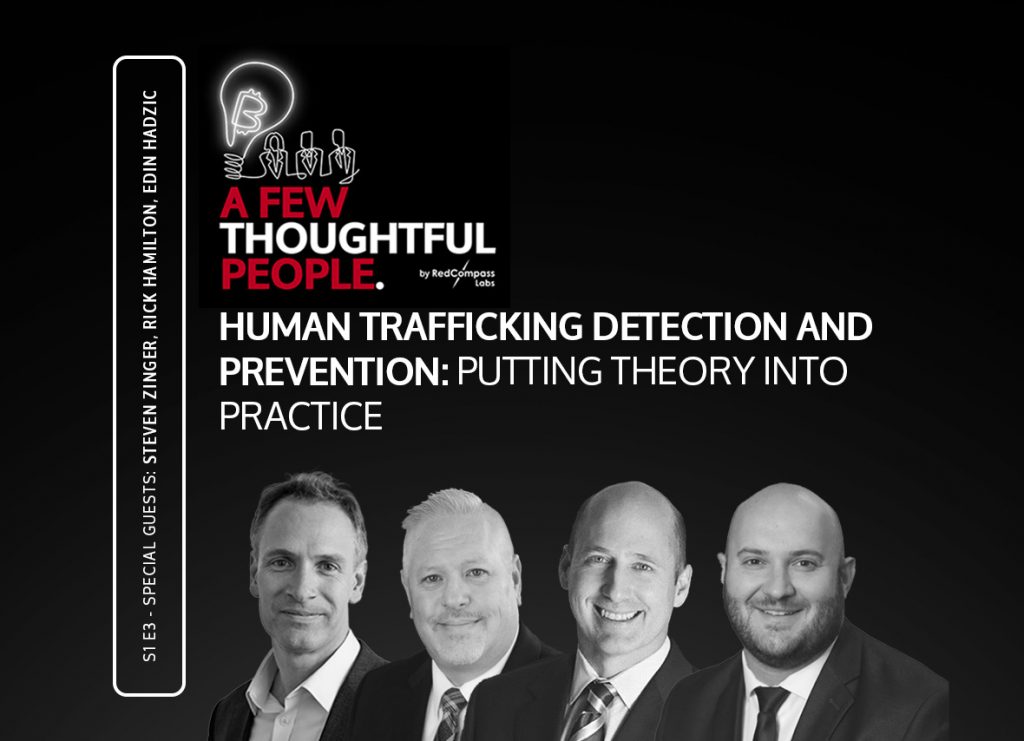Riding the ISO 20022 Wave from Cross Border to Faster and Instant Payments (Without Wiping Out)
Greg Prince, Vice President and Director of Core Payments Products at Fifth Third Bank, joined Jonathan Bell and Kjeld Herreman from RedCompass Labs to discuss the coming changes in North America for such schemes as CBPR+, Instant Payments, FedNow, FedWire, and RTR. A lively discussion touched on the lessons learnt about Instant Payments in Europe and the challenges of tackling financial crime.
This podcast is part of the After Hours by RedCompass Labs series.
Where the best and brightest in the financial services industry tell what they really think about payments.
ISO 20022 in the US: the current state of play
We all know that ISO 20022 is inevitable. But what’s complicating the picture are differing deadlines, as well as a transitional period where we’ll see two messaging formats in operation – which could lead to chaos if banks are unprepared.
And some banks seem to be dragging their feet too. Inexplicable as it may seem, because they have to make the switch anyway, complications arise when it comes to cost, competing priorities and the question over what to do with legacy systems.
We often think of our friends across the pond as being in a similar situation to us on many fronts, but this isn’t always the case with payments. To explore how ISO 20022 could transform payments in the US, as well as the challenges in implementing it there, Jonathan Bell of RedCompass Labs sat down with Greg Prince, who is the Director of Product for Core Payments at Fifth Third Bank, and Kjeld Herreman, the Head of Payments Strategy from RedCompass Labs.
The state of play
In August last year, the Federal Reserve (the US’s central bank) announced that the new messaging service would be adopted over a single day – March 10th 2025 – rather than in three separate phases. The Fed also provided a timeline, incorporating public feedback, for how it would be rolled out. But, considering that some banks are already getting on board with ISO 20022 earlier, US payments providers need to know their MT from their MX.
Regarding the current state of ISO 20022 uptake, Prince remarks, “We’re seeing adoption from large corporates and middle market companies that are globalising.” The US is “EDI-centric” when it comes to payments messaging, he says, and there’s been plenty of education on this front in the past.
There’s also a lot that can be gleaned from Europe. The continent’s ISO 20022 journey started a fair bit earlier. In 2008, the Single Euro Payments Area went live, “where essentially all the European domestic schemes converged and became this one general single European payment infrastructure,” Herreman explains.
But difficulties arise when it comes to cross-border payments: it’s much more complicated, nuanced and there are richer formats. Another difference between the US and Europe boils down to the fact that our instant payment scheme has been live on ISO for the last couple of years. And our high value payment systems, as well as our cross-border payments, are also migrating.
What are the drivers?
The US looks likely to follow in the steps of Europe, where the main push for ISO came from large corporates – which have a whole ecosystem of clients and suppliers around them. And, what we would expect, is that this ecosystem of suppliers around the large corporates starts adopting ISO. Just like dominoes falling, they’re the next layer of expansion.
What’s up for discussion, though, is how quickly this ripple effect will take place. Prince reckons that “unless there’s a specific mandate, kind of on the use of ISO, I think it’s really going to kind of pour last drive to how customers will integrate through their ERP.”
Now, on to the differences. What sticks out for Prince, when it comes to ISO 20022 in the US, is paying bills. “Don’t think about consumers making online bill pay in using the request for payment (RTP) capability that’s inherent, but that either enhanced IP payments or RTP. And, to me, that really could provide flexibility to the consumer where they might not necessarily know that ISO is involved behind the scenes.”
ISO 20022 can also allow banks to operate more efficiently, in turn bringing down costs, which is true across the board. For Herreman, “one of the things that always surprises me when looking at the US market, it’s the price of payments, especially for consumers. In Europe, retail customers don’t pay for account-based payments. It’s part of your standard banking package.” If these kinds of charges are abandoned, ISO 20022 could, therefore, pave the way to financial inclusion for those who were previously unable to afford these kinds of services.
The next steps
There are various ways that US companies can ready themselves. “Do you go for a tactical approach, looking at boundary translation, but keeping your canonical formats in your legacy formats shielding your payment engines from that complexity? Or do you go for a more strategic approach, and kind of make ISO 20022 your column reference data model, and essentially, use that to get customer insights?,” Herreman muses. Ultimately, he thinks, the strategic way is best in the long run.
But, as Prince points out, the more you look into this, “you start to realise all these tentacles, the payment, and the format types, and how that transcends across multiple different applications within the bank.” It won’t be easy, but it will be worth it.
And that’s exactly why taking the time to intricately and comprehensively create a strategy for the ISO 20022 migration is so critical. There won’t be a second chance to get off on the right foot.
Share this post
Resources






